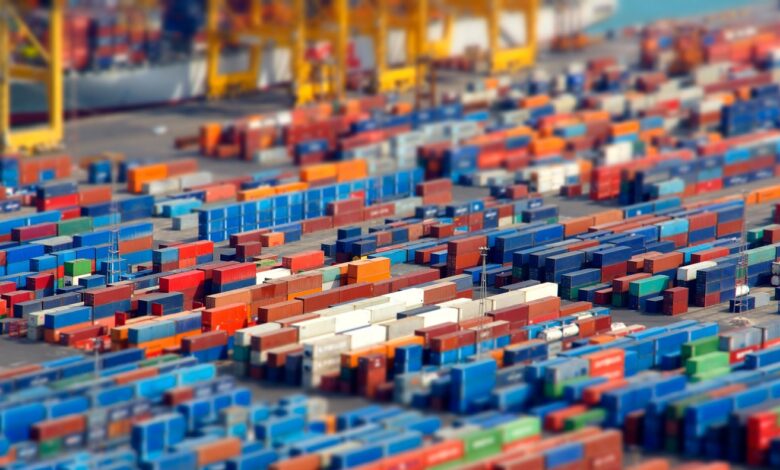Additive manufacturing (AM), also known as 3D printing, is emerging as a transformative force in industrial production, particularly in the field of supply chain management. Traditional manufacturing techniques have long been associated with high material waste, slow production times, and hefty logistical costs. However, as AM continues to evolve, it presents a paradigm shift in how companies design, produce, and distribute products.
Dharit Shah, an expert in industrial engineering and supply chain optimization, has extensively researched the role of additive manufacturing in modern supply chains. In this exclusive interview, he shares his insights on the current landscape and the future of AM in revolutionizing industries such as aviation, healthcare, and beyond.
Table of Contents
Early Attraction to Additive Manufacturing
Dharit Shah’s journey into additive manufacturing began during his graduate studies in Industrial Engineering. He was drawn to the challenges associated with traditional supply chains, including excessive inventory costs, long lead times, and limited product customization options. These
issues sparked Shah’s curiosity about how 3D printing could optimize these processes. “The potential of 3D printing to optimize supply chain management captivated me, so I decided to explore its real-world applications,” Shah shared.
From the outset, Shah recognized that additive manufacturing could address inefficiencies that had long been entrenched in traditional manufacturing systems. His research aimed to uncover how AM could streamline operations, reduce waste, and enable more responsive, on-demand production across various industries.
Key Differences Between Additive and Traditional Manufacturing
One of the key themes of Shah’s research is understanding how additive manufacturing differs from traditional manufacturing methods. Traditional manufacturing typically uses subtractive processes, such as cutting, molding, or casting. These processes often generate significant material waste, require complex and expensive supply chains, and are time-consuming.
In contrast, additive manufacturing builds products layer by layer, using precise amounts of material. This minimizes waste, increases efficiency, and allows for a higher degree of customization. As Shah explains, AM enables on-demand production, which eliminates the need for large inventories and facilitates the creation of highly specialized products without the constraints imposed by conventional methods.
Industries Most Benefiting from Additive Manufacturing
Shah’s research explores the widespread applications of additive manufacturing across various industries, but he highlights aviation and healthcare as two sectors that are seeing the most significant impact. In aviation, spare parts production has traditionally been a major challenge due to stringent quality standards and the high costs associated with managing inventory. AM offers a solution by enabling decentralized production, which reduces both costs and lead times.
In healthcare, additive manufacturing has opened new doors for personalized medicine. 3D- printed prosthetics and implants can be tailored to the unique anatomy of individual patients, resulting in better outcomes and fewer complications. Shah believes that AM’s ability to customize products on a case-by-case basis makes it a game-changer for industries where precision and personalization are paramount.
Enhancing Supply Chain Efficiency
One of the most compelling aspects of additive manufacturing is its potential to restructure and streamline supply chains. Traditional supply chains often involve multiple intermediaries, such as manufacturers, warehouses, distributors, and retailers. This adds complexity, cost, and delays to the process.
AM, however, allows for production closer to the point of consumption. This direct-to-consumer model reduces reliance on third-party manufacturers and warehouse storage. For instance, companies can 3D print spare parts on-site rather than maintaining large inventories at multiple locations. As a result, storage costs are reduced, and delivery times are shortened. By eliminating some of the traditional steps in the supply chain, additive manufacturing accelerates the production and delivery of products, leading to greater efficiency overall.
The Role of Traditional Manufacturing in the Age of Additive Manufacturing
While additive manufacturing is often celebrated for its potential to disrupt traditional manufacturing, Shah stresses that it does not entirely replace conventional methods. AM is particularly well-suited for low-volume, highly customized production, but for large-scale manufacturing, traditional techniques still have a clear advantage. Mass production lines are faster and more cost-effective than AM for producing large quantities of the same product.
However, Shah notes that hybrid approaches are emerging, combining the strengths of both additive and traditional manufacturing. For example, companies like Nike have begun using AM to produce custom footwear or prototypes, while still relying on traditional manufacturing for mass production. These hybrid systems allow companies to maximize the advantages of both approaches and optimize their operations.
The Cost-Effectiveness of Additive Manufacturing
A common concern for businesses considering the adoption of additive manufacturing is the initial investment in 3D printing equipment. The upfront cost can be significant, but Shah highlights that the long-term return on investment (ROI) often justifies the expenditure. For example, in the jewelry industry, a single 3D printer costing around $160,000 can produce custom pieces in a fraction of the time required by traditional methods. In aviation, organizations like the U.S. Air Force have found that AM significantly reduces transportation and inventory costs for spare parts.
Over time, the savings from reduced material waste, faster production, and lower logistical costs help offset the high initial investment in 3D printing technology. Furthermore, AM allows
businesses to operate in a more agile, on-demand production model, which provides additional cost savings and flexibility in responding to market demands.
Limitations of Additive Manufacturing
Despite its many advantages, additive manufacturing is not without its limitations. Shah points out that the speed of production is one of the primary challenges. While AM is excellent for prototyping and small-batch production, it is not yet as fast as traditional manufacturing techniques, especially in high-volume mass production.
Material constraints also remain a concern. While AM has made significant strides in expanding the range of materials that can be used, not all metals, polymers, and composites are suitable for 3D printing yet. However, Shah is optimistic that ongoing advancements in material science will gradually overcome these challenges, opening up new possibilities for additive manufacturing.
The Future of Additive Manufacturing: Looking Ahead
Looking to the future, Shah envisions a widespread adoption of decentralized manufacturing systems powered by AM. With ongoing improvements in printing speeds, material properties, and design capabilities, AM will become more viable for mass production. He also anticipates innovations like 4D printing, where objects can change shape over time, to have a transformative impact on industries like healthcare and aerospace.
As AM continues to mature, Shah believes it will enable companies to produce more sustainable, customized, and efficient products. The rise of on-demand production will also challenge traditional supply chain models, promoting localized manufacturing and reducing reliance on global supply chains. This could lead to faster, more responsive production systems that are better equipped to meet the needs of a rapidly changing world.
Advice for Businesses Considering Additive Manufacturing
For businesses considering adopting additive manufacturing, Shah offers a few pieces of advice. First, he recommends identifying areas in the supply chain where AM can provide the most value, such as in areas requiring high levels of customization, waste reduction, or speed improvements. Starting with pilot projects focused on low-volume or prototype production can help businesses understand the potential benefits before scaling up to more complex applications.
Shah also emphasizes the importance of collaboration. Partnering with research institutions and technology providers will be crucial for staying ahead of the curve and leveraging the latest advancements in additive manufacturing. By working together, businesses can ensure they are well-positioned to take advantage of the opportunities that AM presents.
Conclusion
Dharit Shah’s research highlights the transformative potential of additive manufacturing in supply chain management. From its ability to reduce waste and shorten lead times to enabling highly customized production, AM is poised to revolutionize industries across the board. While challenges remain, particularly in terms of speed and material limitations, the future of additive manufacturing is bright. As technologies continue to improve, businesses that embrace AM will likely find themselves at the forefront of a new era of manufacturing, one that is more efficient, sustainable, and agile than ever before.


